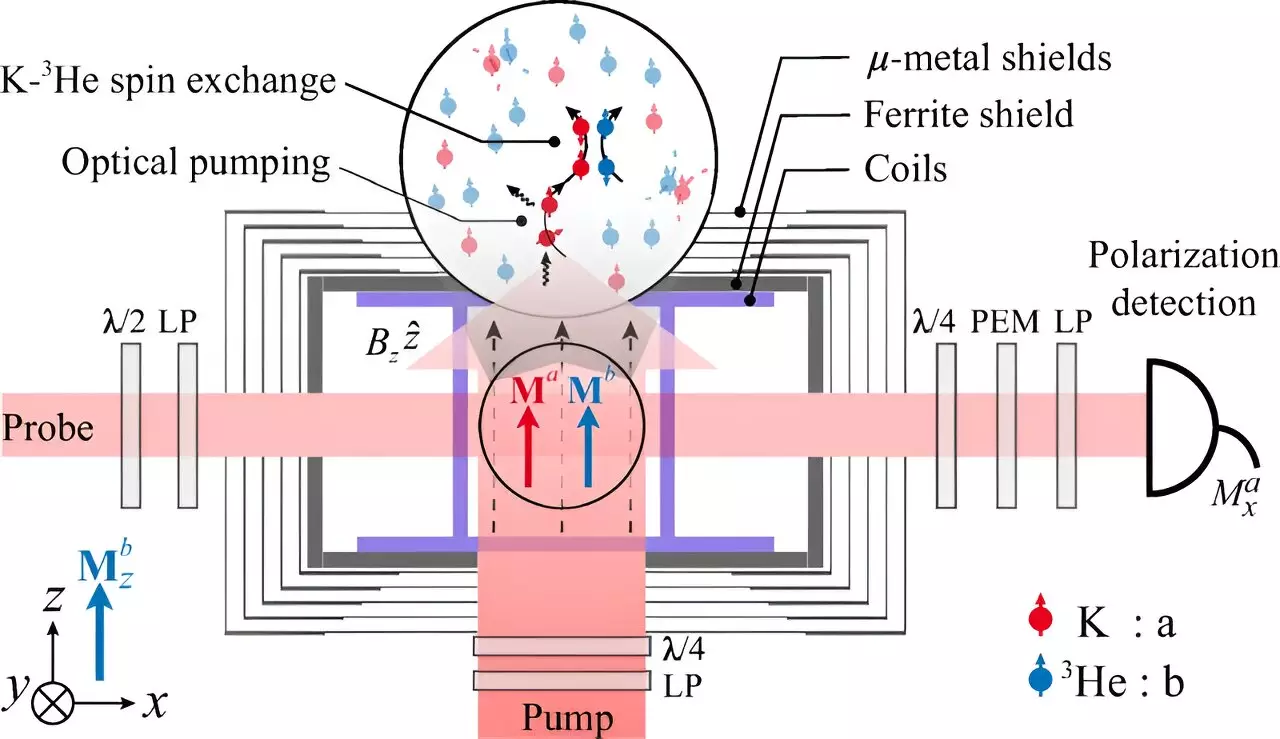Recent advancements in the field of precision measurement have unveiled a fascinating phenomenon—Fano resonance interference—exploited to develop a groundbreaking technique for suppressing magnetic noise. Under the leadership of Prof. Peng Xinhua and Associate Prof. Jiang Min at the University of Science and Technology of China (USTC), the research team has made strides in tackling the prevalent challenges posed by magnetic noise interference, achieving remarkable reductions by at least two orders of magnitude. This pivotal research, published in *Physical Review Letters*, sheds light on exotic spin interactions that hold great promise for the scientific community.
The exploration of exotic spin interactions transcends conventional physics, drawing significant interest in various fundamental areas, including dark matter investigations and the potential existence of a fifth force in nature. These exotic interactions essentially act as magnetic fields influencing particle spins, thus necessitating sophisticated measurement techniques to discern these inherently weak signals amidst overwhelming background noise. Traditional approaches often fell short, particularly in capturing low-frequency noise (below 1 Hz), while researchers aimed to explore high-frequency ranges vital for ongoing and future experimental endeavors.
Despite previous troubleshooting efforts, existing atomic comagnetometers have struggled to adequately reduce magnetic noise interference, significantly impeding the exploration of new parameter spaces associated with exotic spin interactions. The inherent limitations of these devices in addressing fluctuating magnetic fields have drawn attention to the urgent need for innovative solutions that not only increase sensitivity but also widen the spectrum of detectable frequencies without the negative influence of noise.
In light of these challenges, the research team has pioneered an inventive magnetic noise suppression method based on the self-compensation effects of magnetic noise. The experimental setup involved a mixed system of potassium (K) and helium-3 (3He) gases, where lasers polarized the potassium atoms, facilitating polarization and readout of the nuclear spin of helium-3 through spin-exchange collisions. This methodology harnesses the inherent dynamics of these atoms to effectively mitigate noise.
Researchers innovatively manipulated the bias magnetic field, adjusting both its magnitude and directional angle concerning specific frequency magnetic noise, achieving effective suppression of magnetic noise from static levels to those fluctuating up to 200 Hz. The results of their experiments illuminate the potential for employing Fabry-Perot resonance interference principles, serving as a novel theoretical framework through which the gathered data can be interpreted.
This research has profound implications for various disciplines within fundamental physics, particularly in the realm of dark matter detection—a field where measuring minute changes in magnetic fields is paramount. The deficiencies of prior technologies limited the extent of exploration due to excessive noise interference, making the capability to measure properties as fine as 0.1 fT/Hz1/2 a significant achievement. Consequently, this novel technique not only enhances sensitivity but also operates effectively across a broader frequency range, opening new avenues for probing exotic spin interactions and leading to further understanding of the universe’s hidden dimensions.
The impact of this discovery and its methodology is anticipated to extend far beyond its immediate applications. Future studies may leverage this magnetic noise suppression technique to delve deeper into the understanding of spin-dark matter particle interactions and beyond, potentially unraveling new forces that govern our universe. The framework developed here could inform a variety of experimental setups, thereby enriching the field of precision measurement and challenging existing paradigms.
The collaborative efforts of the research team signify a major leap forward in addressing the pervasive issue of magnetic noise in experimentation. By overcoming significant hurdles, this advancement paves the way for more precise measurements crucial for groundbreaking discoveries in fundamental physics. The work not only enriches our current understanding but also inspires a wave of curiosity that may eventually lead to the unearthing of long-sought scientific truths.


Leave a Reply